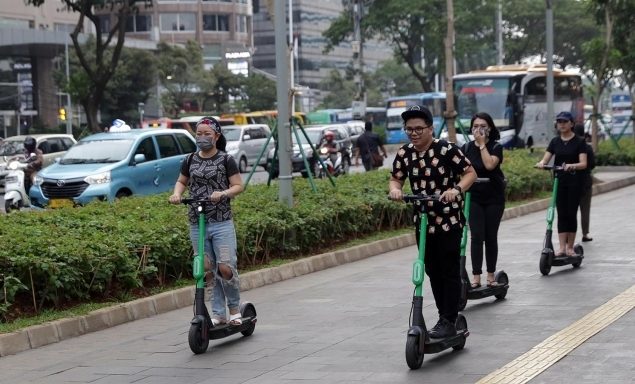Business, General
Is e-scooter sharing at stake in Asia ?
18 November, 2019
While reading the news of the footpath ban for e-scooters in Singapore, micromobility specialists saw it as a bad sign: for years, the city-state has been at the cutting edge of the integration of shared mobility services, and all its decisions are therefore scrutinized by the rest of the world.
The recent news of a similar decision soon to be taken by the authorities of Jakarta, the Indonesian capital, sounds like a confirmation of the complicated future for e-scooters in the Asian metropolis.
A matter of safety
In both Singapore and Jakarta, the laws have been motivated by deadly accidents involving e-scooter riders. In Singapore, among other sad events, a cyclist died after she collided with an e-scooter rider on a pavement. To protect the pedestrians, Singapore’s Land Transport Authority decided to ban e-scooters from the footpaths… in addition to the existing ban from roads. E-scooters are now restricted to the 440km bicycle-lane network, signing the end of e-scooter sharing services in the country.
Different story in Indonesia, where Grab is operating. Strong measures are considered after an accident leaving two deads e-scooter riders… hit from behind by a car, on the road. As a result, the Ministry for Land Transportation is planning to ban e-scooter from the footpaths – it will only be allowed on bicycle lanes – and to introduce a mandatory helmet law.

What is next ?
If these reactions to a significant number of accidents are understandable, mainly to preserve the safety of pedestrians, it is quite disappointing to read it without any mention of coming measures in order to address these very safety issues. One could have expected a big announcement of bicycle lanes network in the coming years, educative action to raise awareness of responsible riding.
As the usage of e-scooter services is huge in both cities, it is the authorities’ responsibility to adapt their streets for safe e-scooter – and bicycle – riding: the impact of micromobility on air pollution, and therefore on public health, in these congested cities cannot be ignored, and should be a reason for huge investments in infrastructure. Let’s hope it is the direction both cities will take in the future…